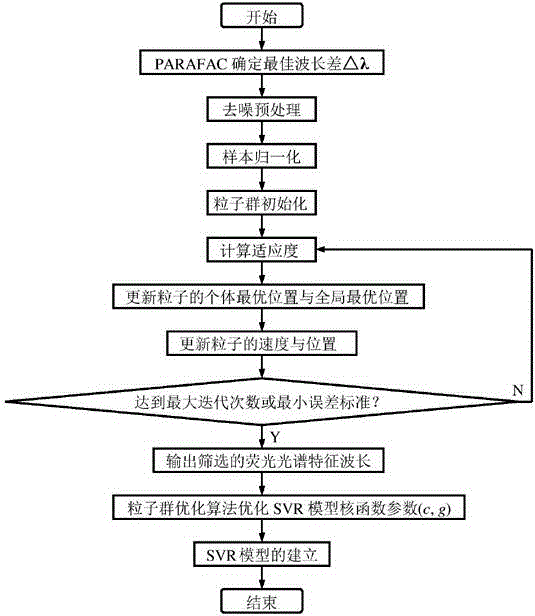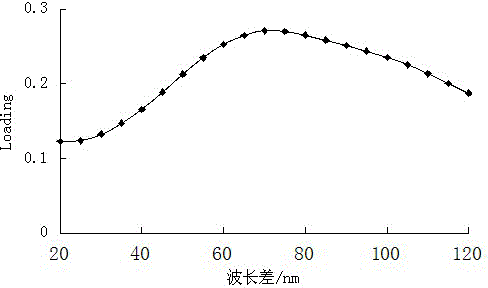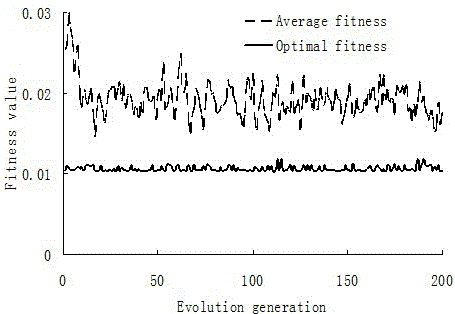Synchronous fluorescence spectroscopy characteristic wavelength screening method based on particle swarm optimization algorithm
A technique of synchronous fluorescence spectrum and particle swarm optimization, applied in the direction of fluorescence/phosphorescence, calculation, calculation model, etc., can solve the problems of slow convergence speed of genetic algorithm, easy to fall into local optimal solution, etc., and achieve the goal of improving the accuracy and speed of the prediction model Effect
- Summary
- Abstract
- Description
- Claims
- Application Information
AI Technical Summary
Problems solved by technology
Method used
Image
Examples
Embodiment 1
[0034] Embodiment 1: A method for screening characteristic wavelengths of synchronous fluorescence spectra based on particle swarm optimization algorithm, see figure 1 , figure 2 , image 3 , the method includes the following steps:
[0035] (1) Firstly, the parallel factor analysis method (PARAFAC) is used to analyze the three-dimensional synchronous fluorescence spectrum to determine the optimal wavelength difference △λ of the antibiotics detected in the three-dimensional synchronous fluorescence spectrum, so as to improve the separation effect of the synchronous fluorescence peaks of the background and the target and the prediction accuracy of the model. This step specifically uses the parallel factor analysis method (PARAFAC) to perform a component analysis on the three-dimensional array of the sample, and obtain the load scores under different wavelength differences △λ, and the wavelength difference △λ corresponding to the maximum load score is the subsequent data proc...
PUM
 Login to View More
Login to View More Abstract
Description
Claims
Application Information
 Login to View More
Login to View More - R&D
- Intellectual Property
- Life Sciences
- Materials
- Tech Scout
- Unparalleled Data Quality
- Higher Quality Content
- 60% Fewer Hallucinations
Browse by: Latest US Patents, China's latest patents, Technical Efficacy Thesaurus, Application Domain, Technology Topic, Popular Technical Reports.
© 2025 PatSnap. All rights reserved.Legal|Privacy policy|Modern Slavery Act Transparency Statement|Sitemap|About US| Contact US: help@patsnap.com



